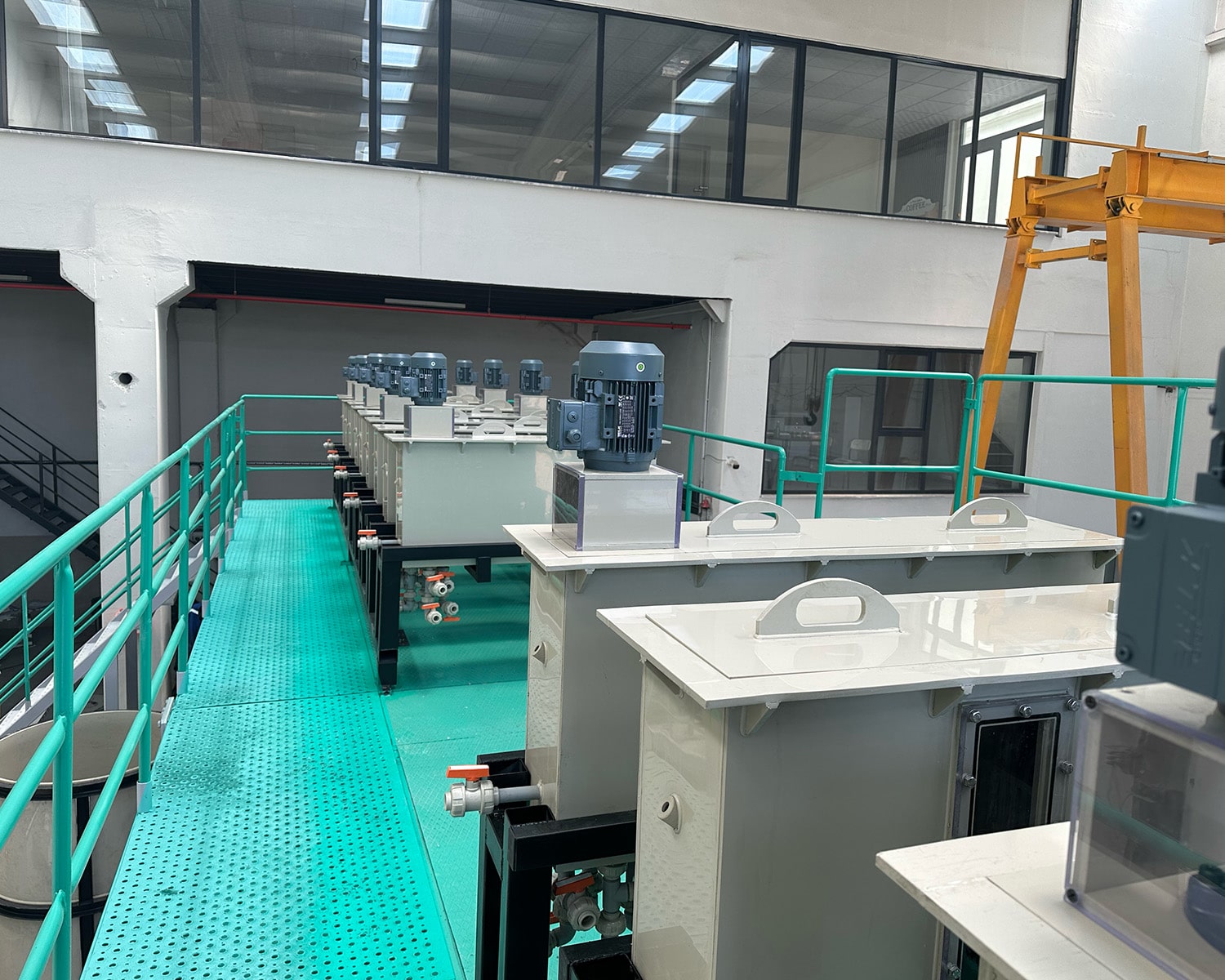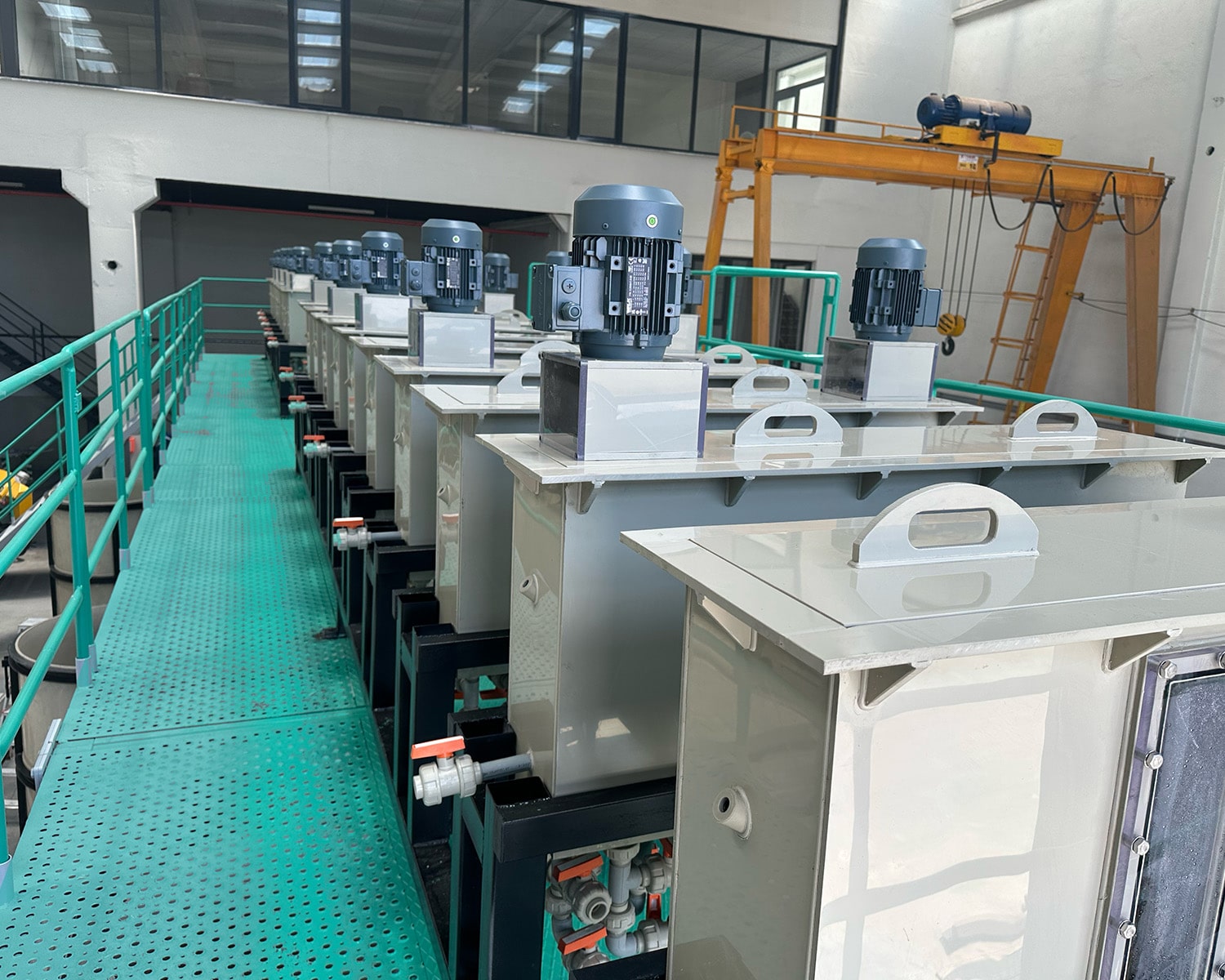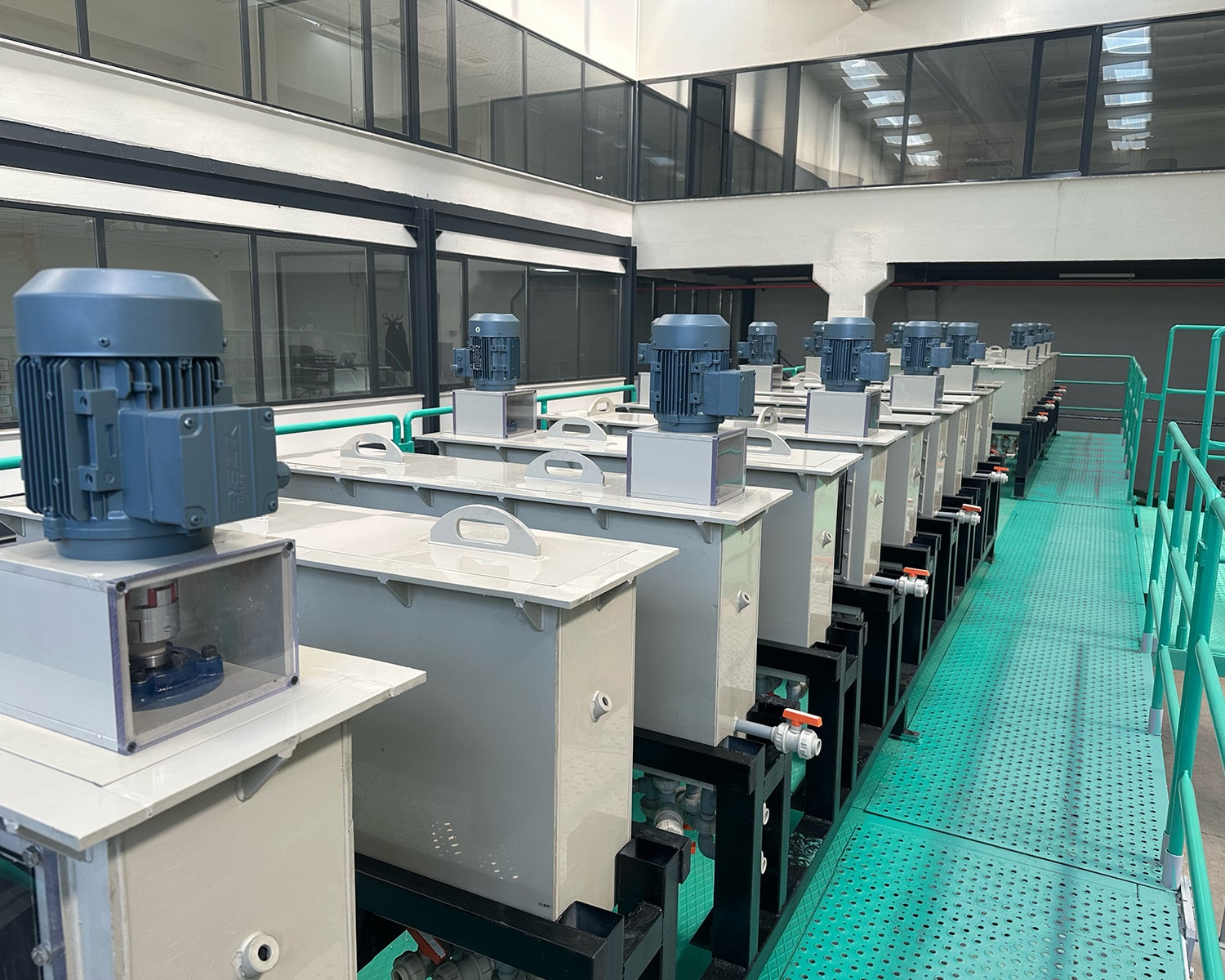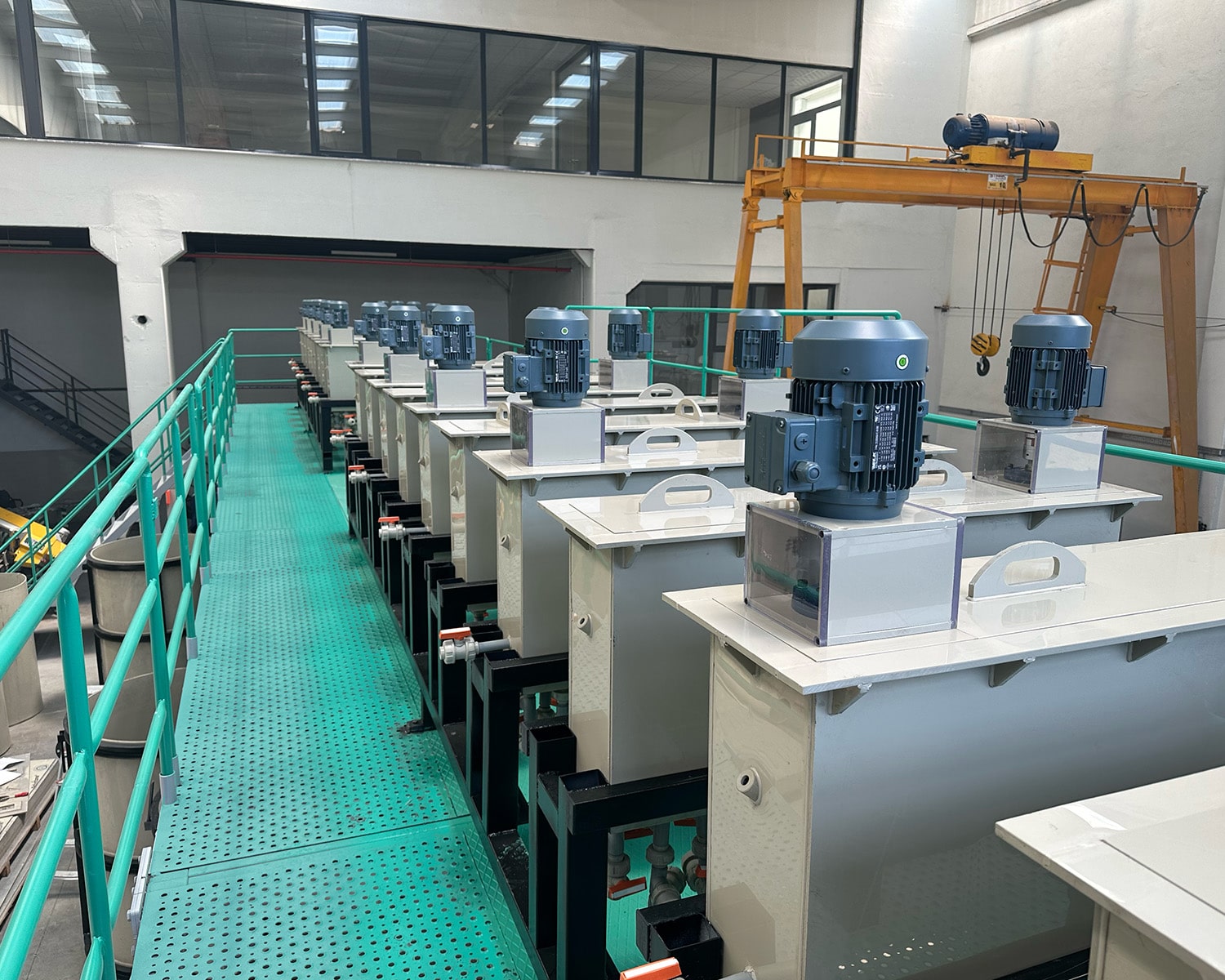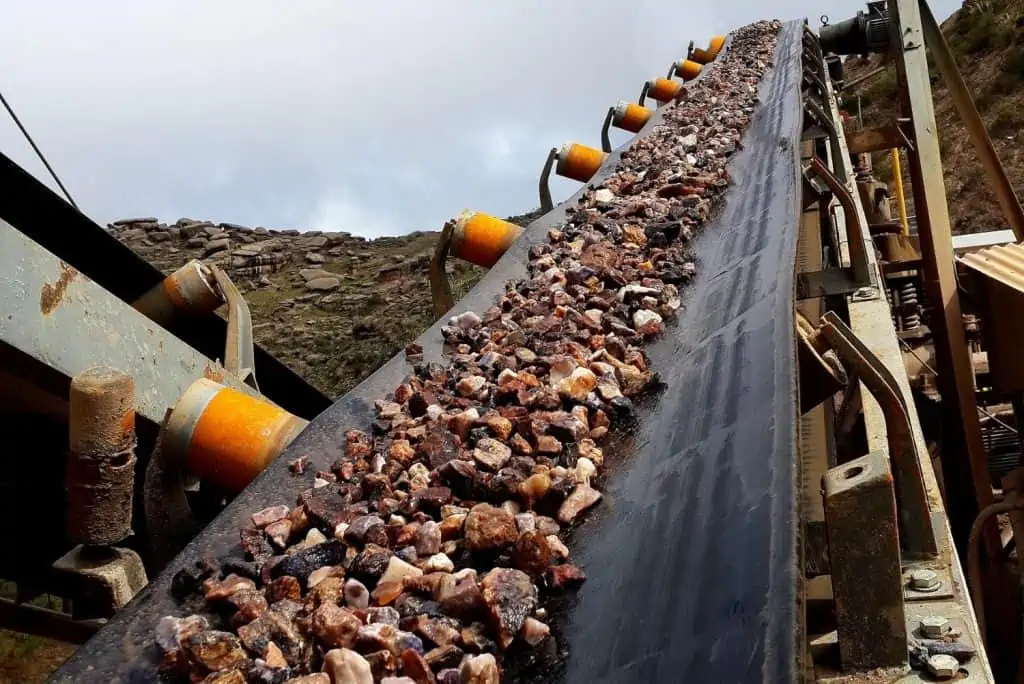
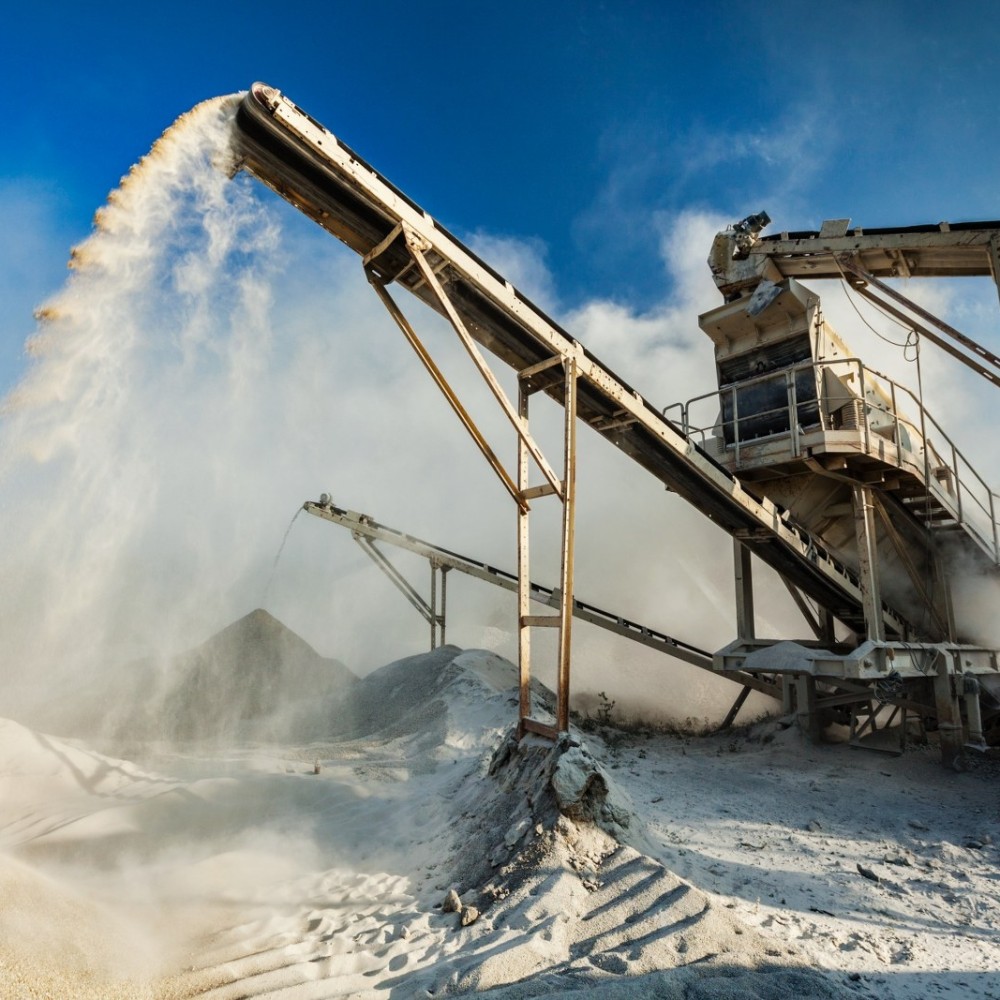
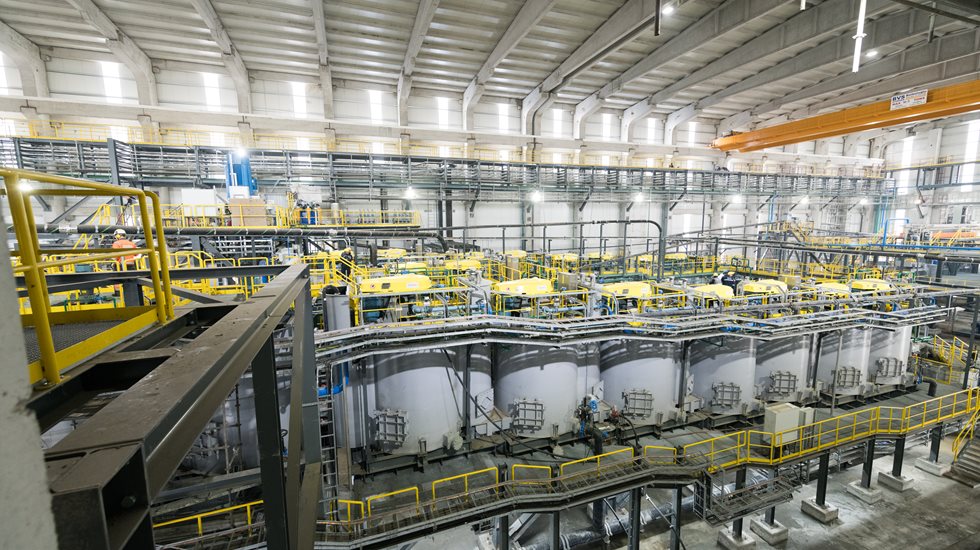
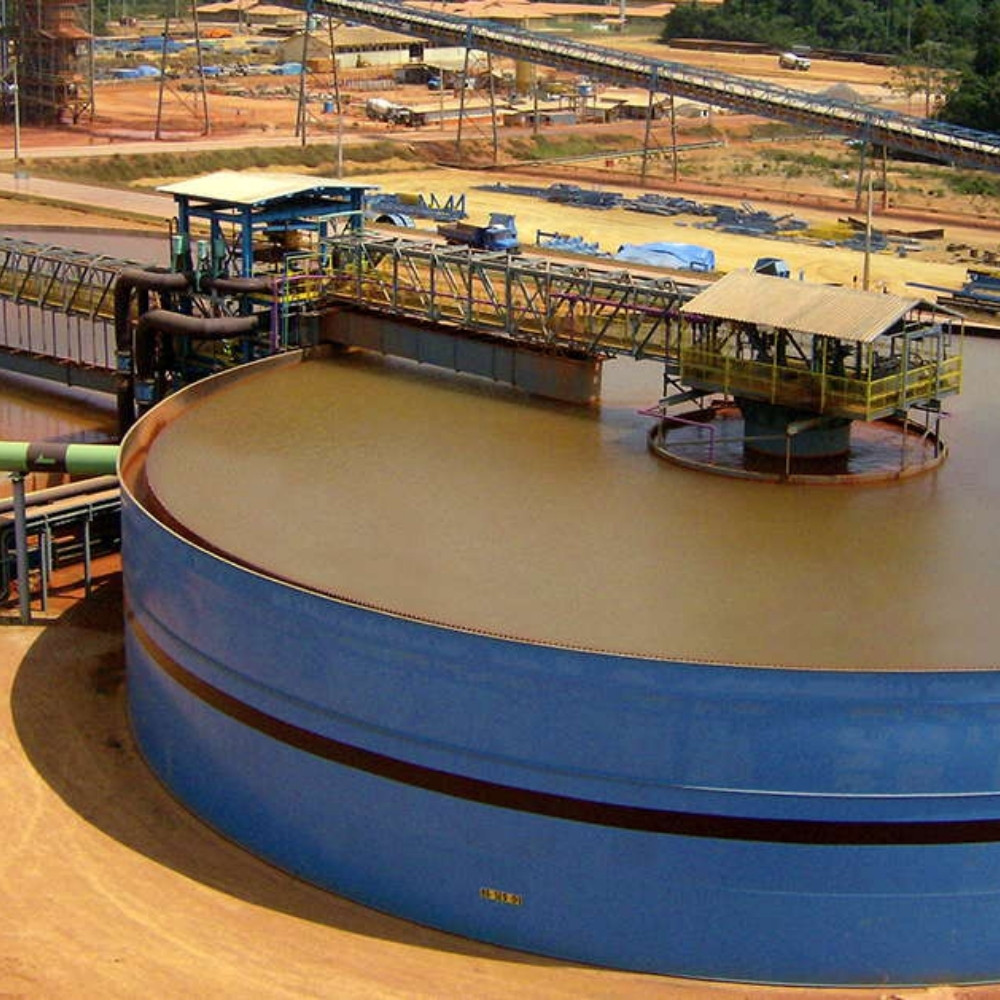
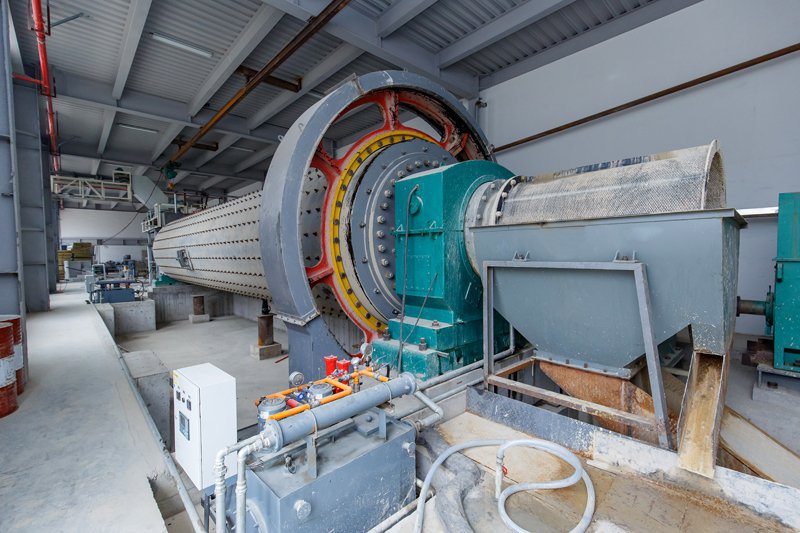
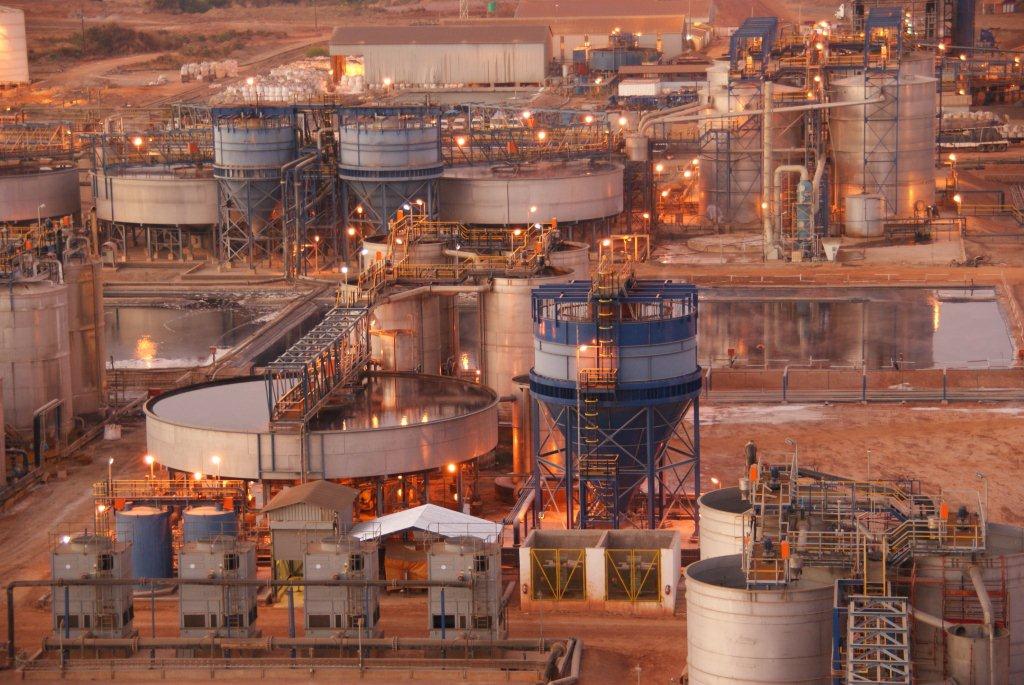
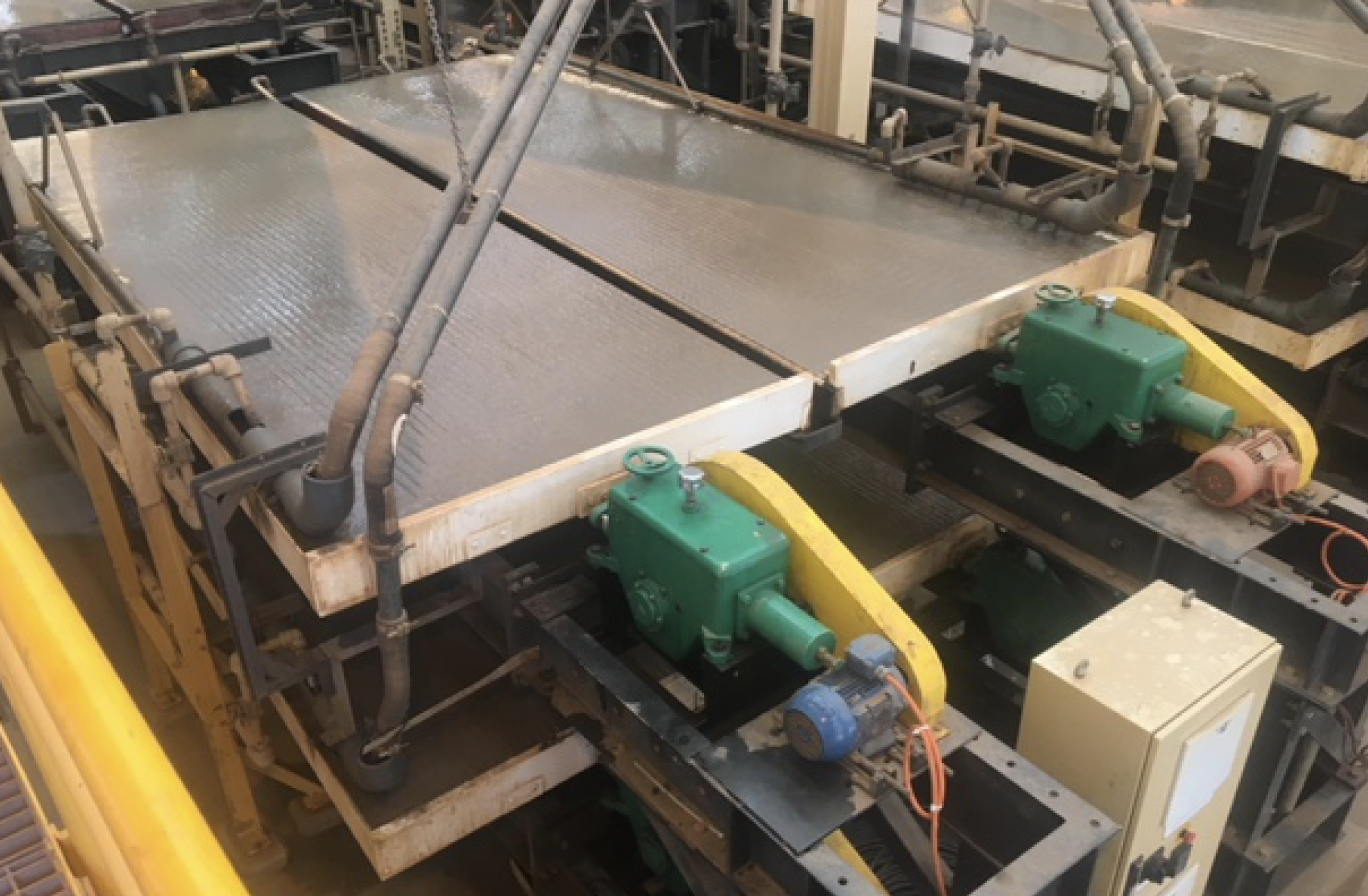
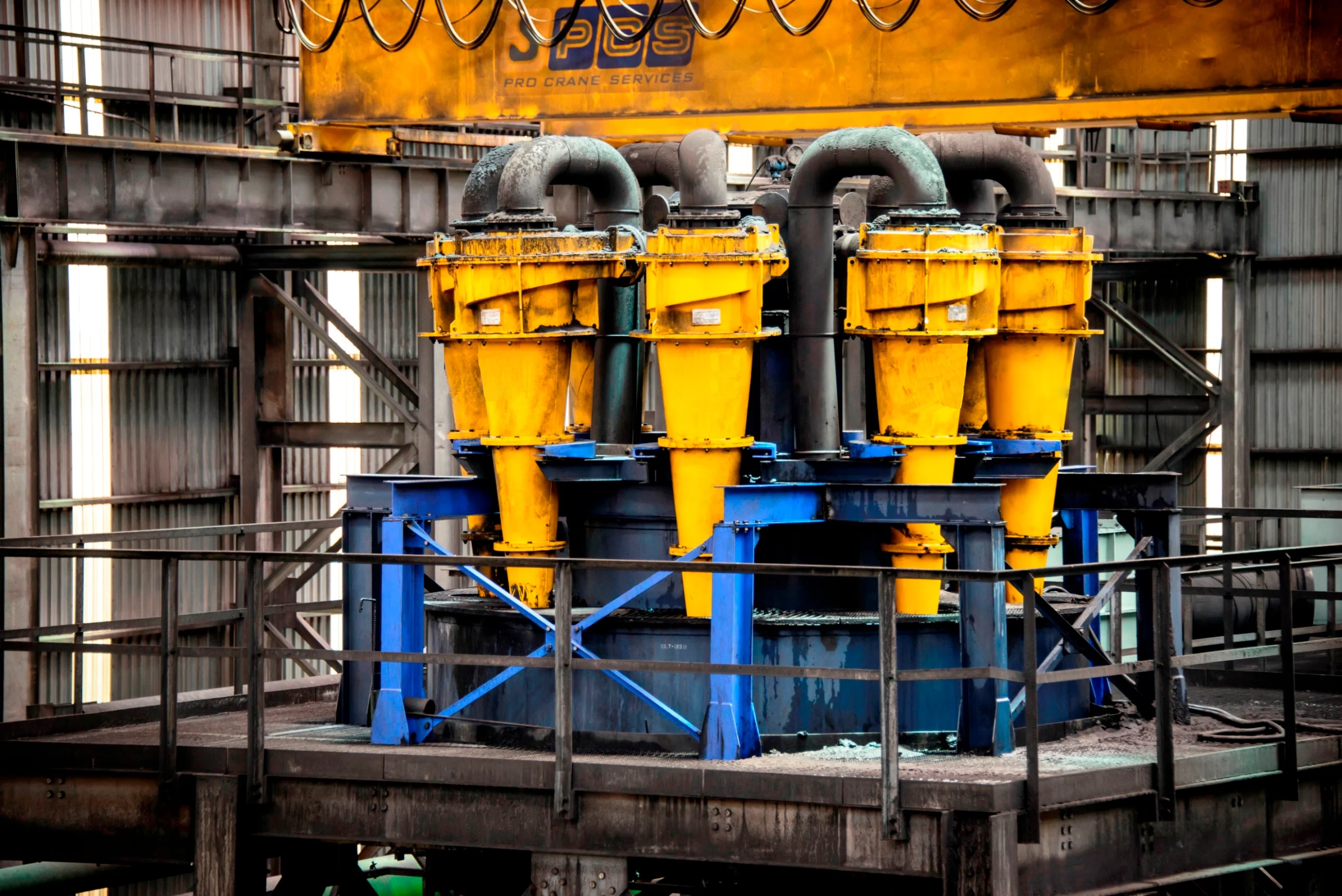
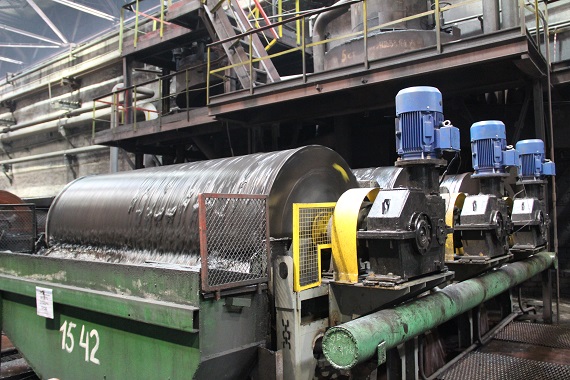
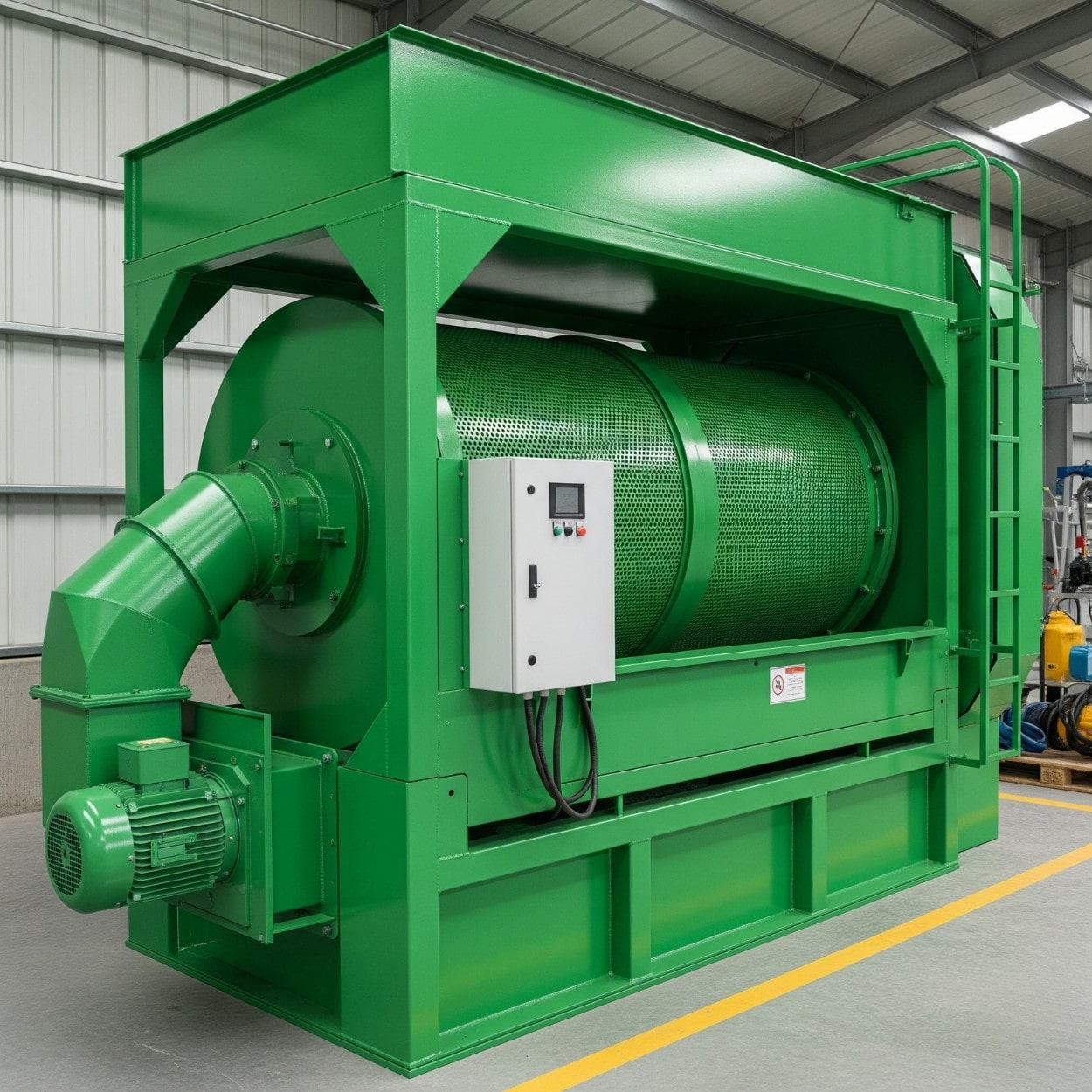
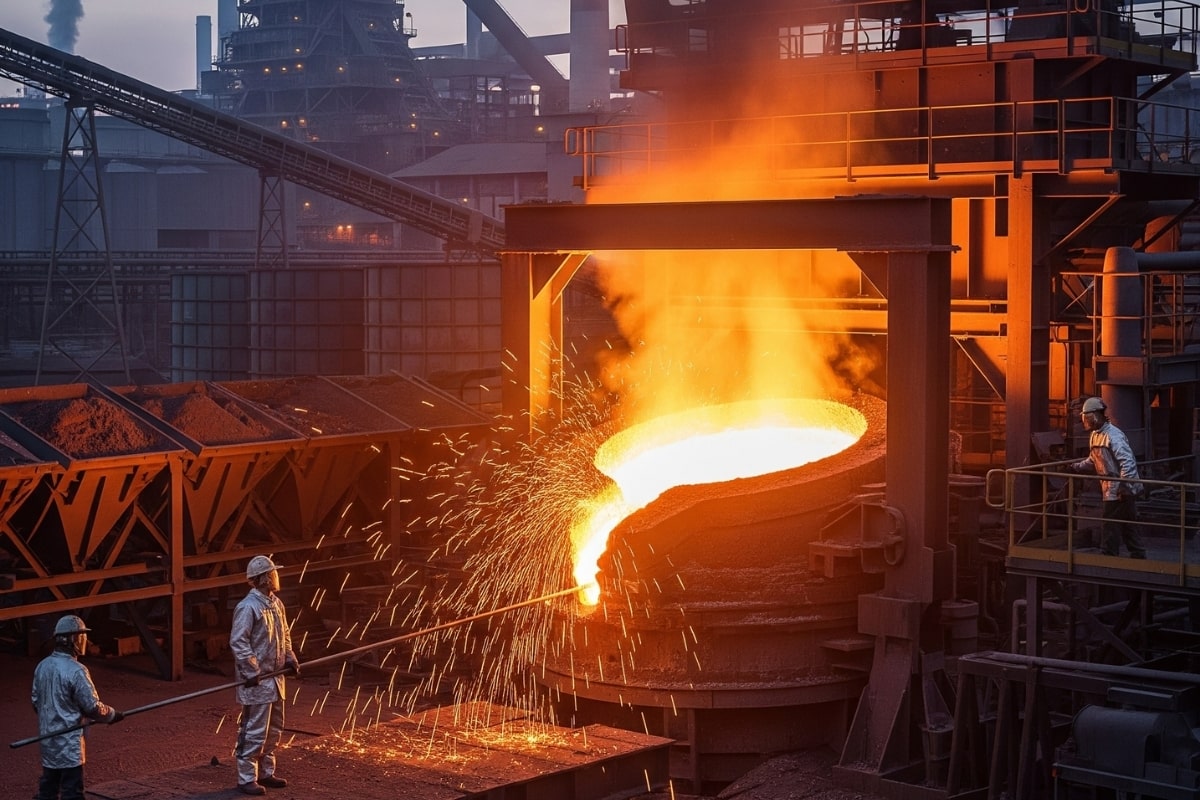
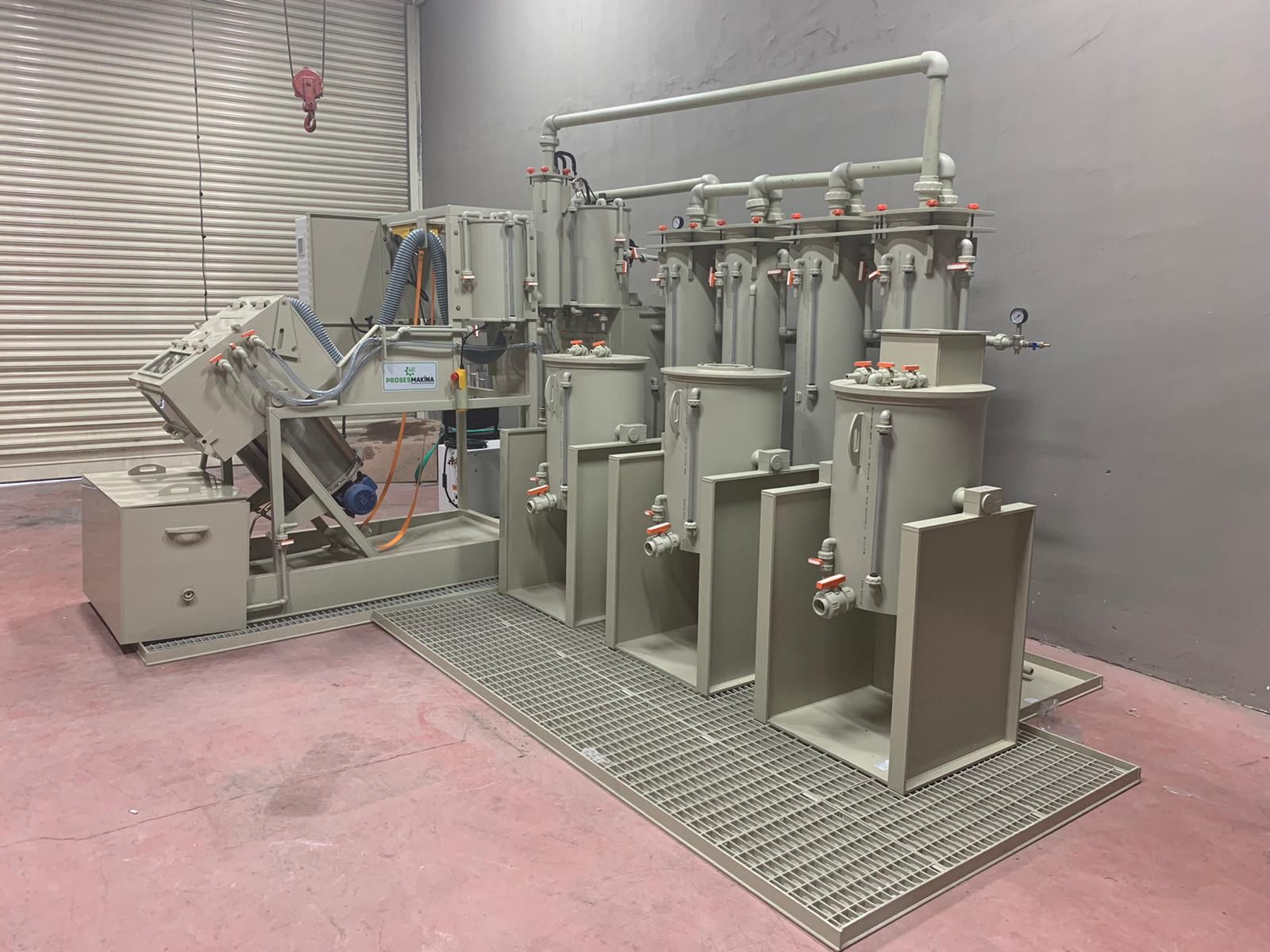
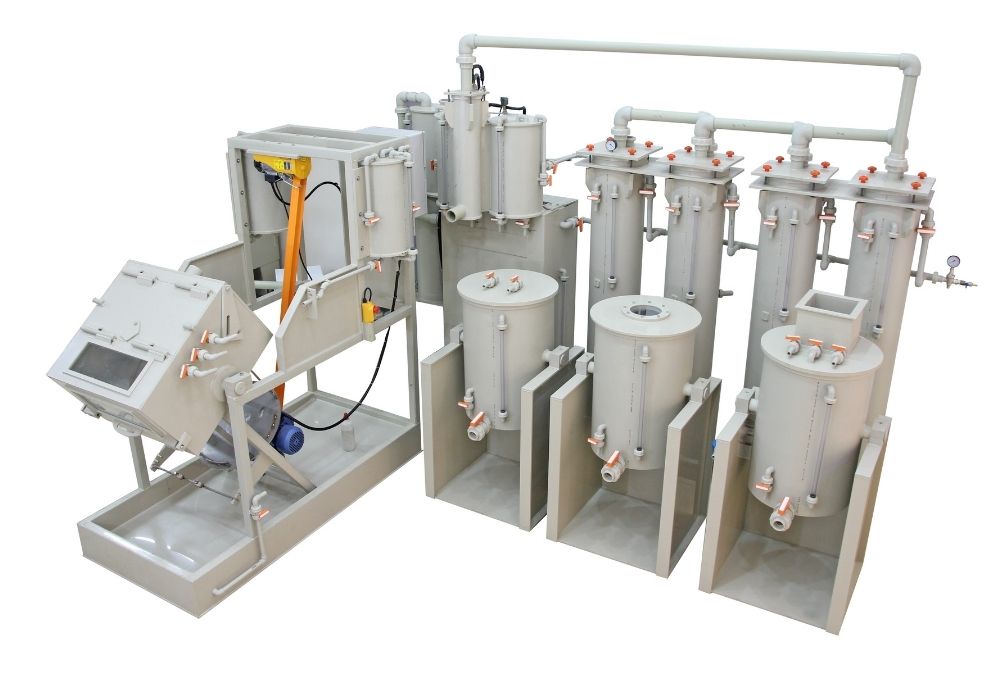
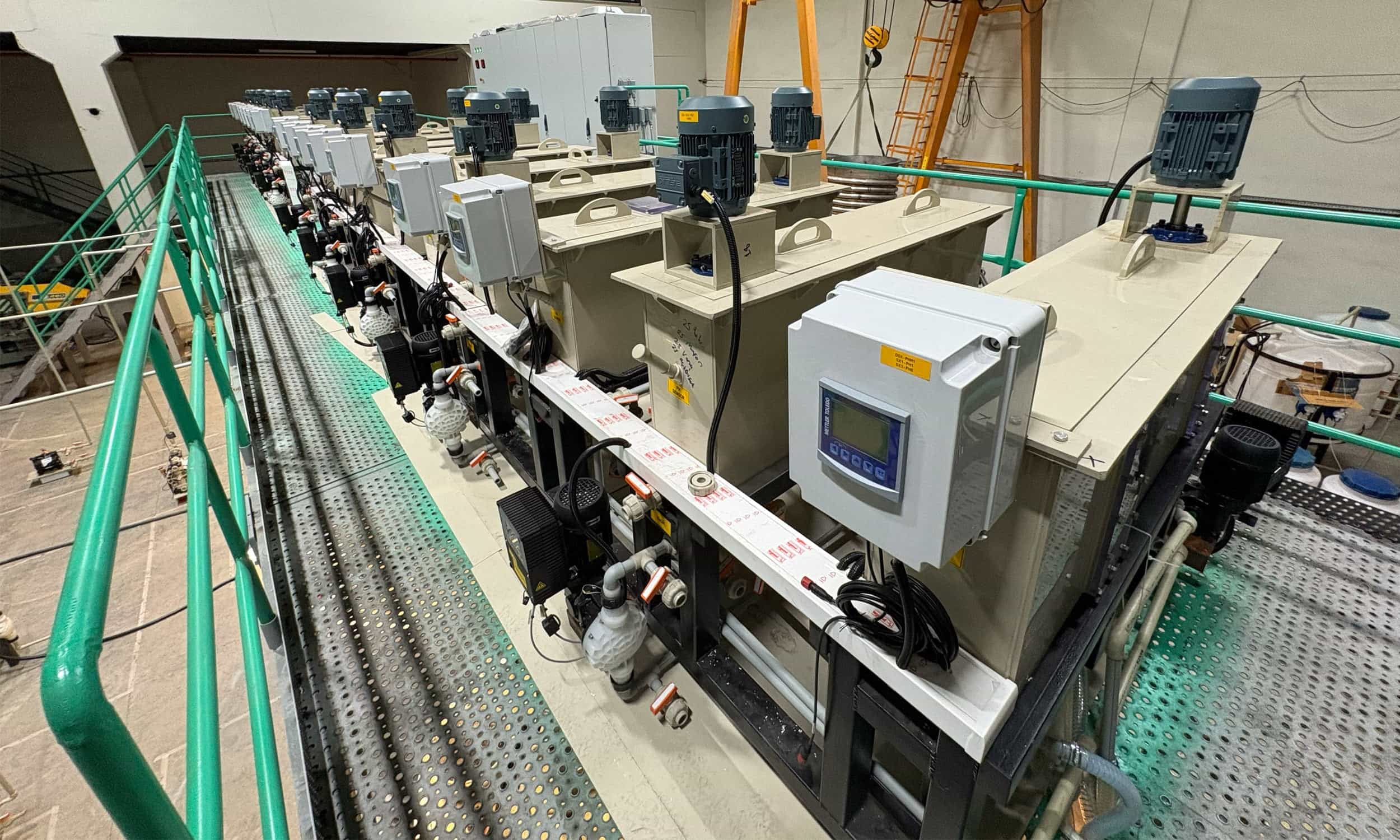
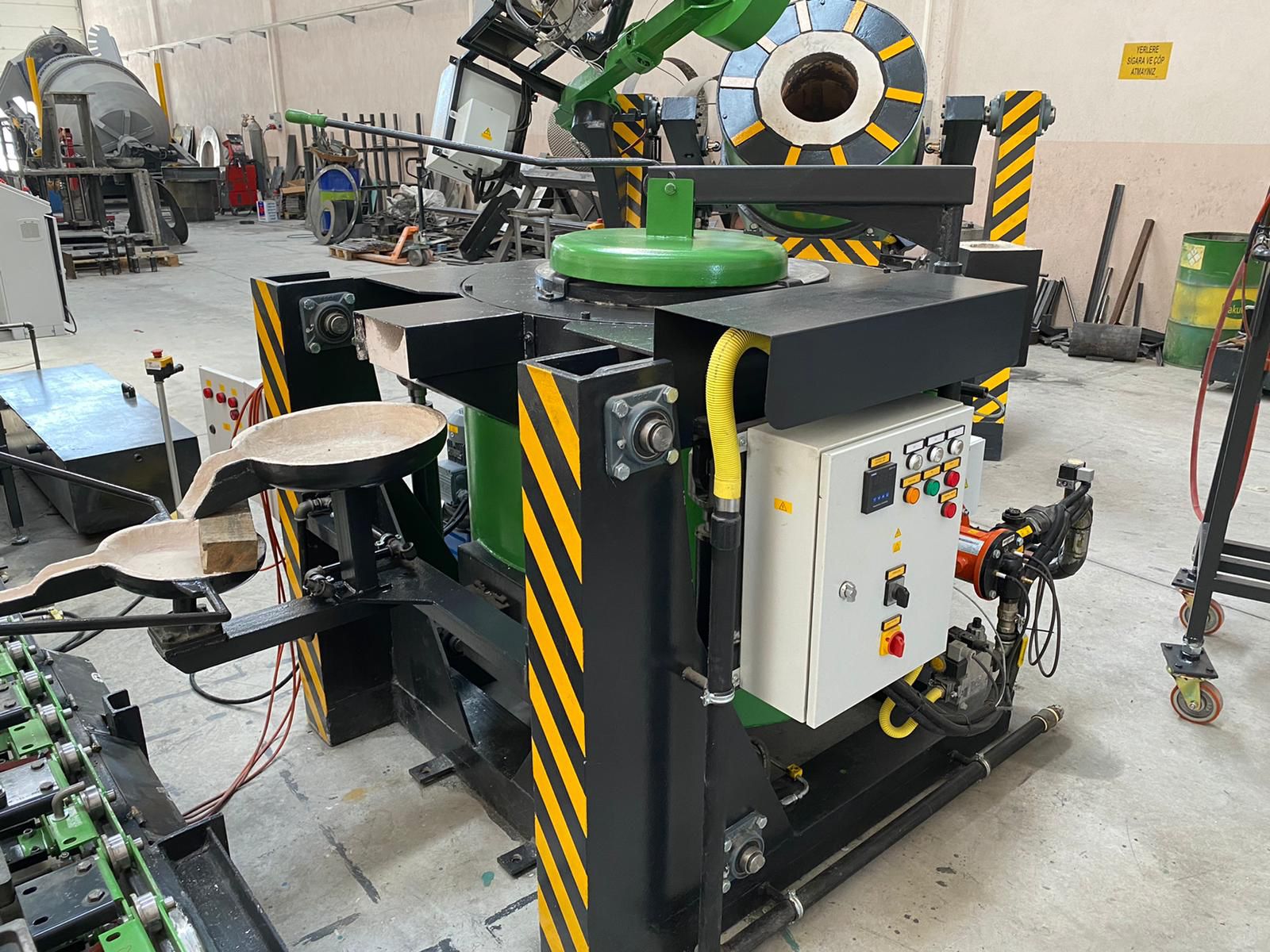
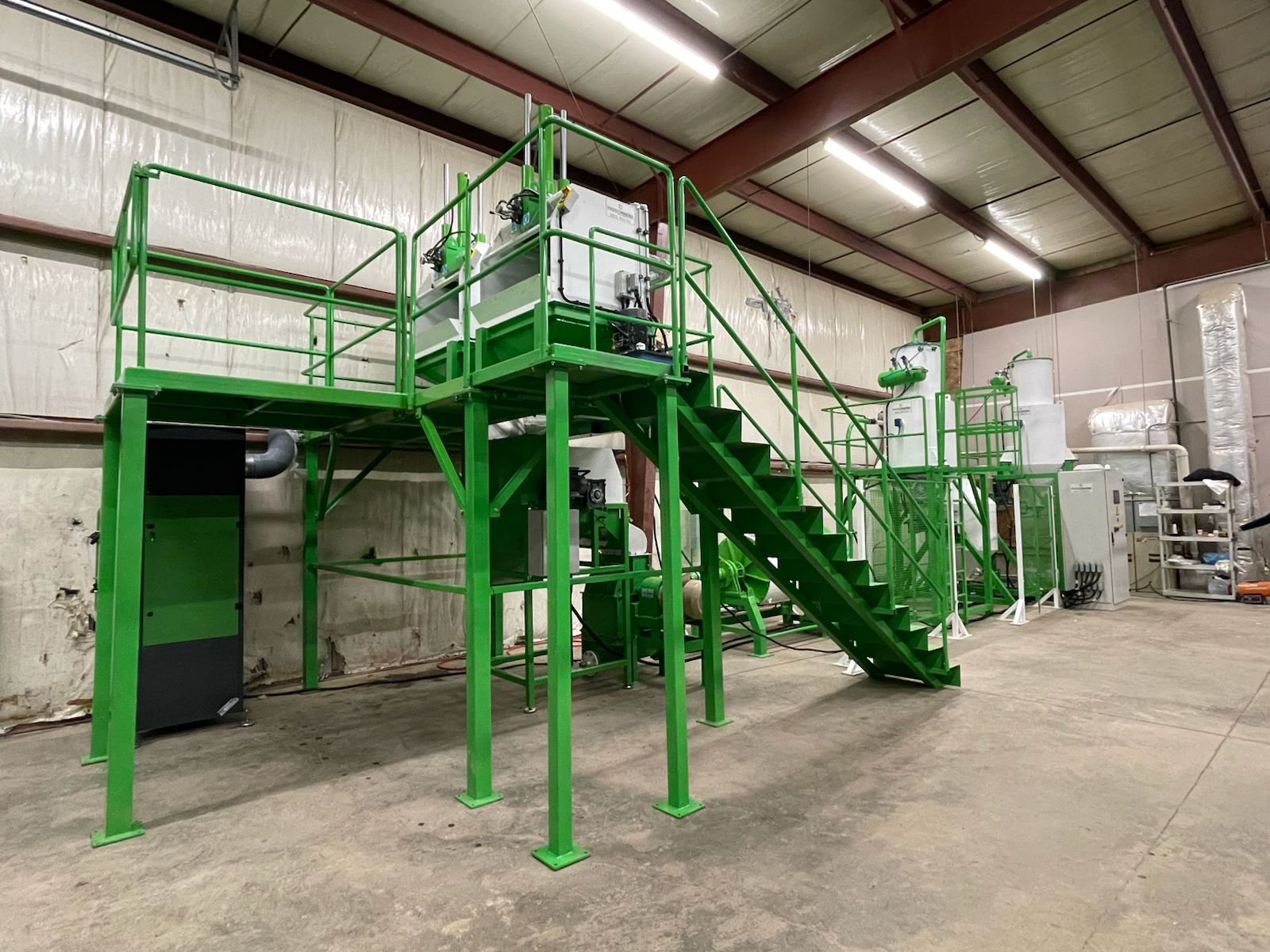
HIGH PRODUCT PURITY
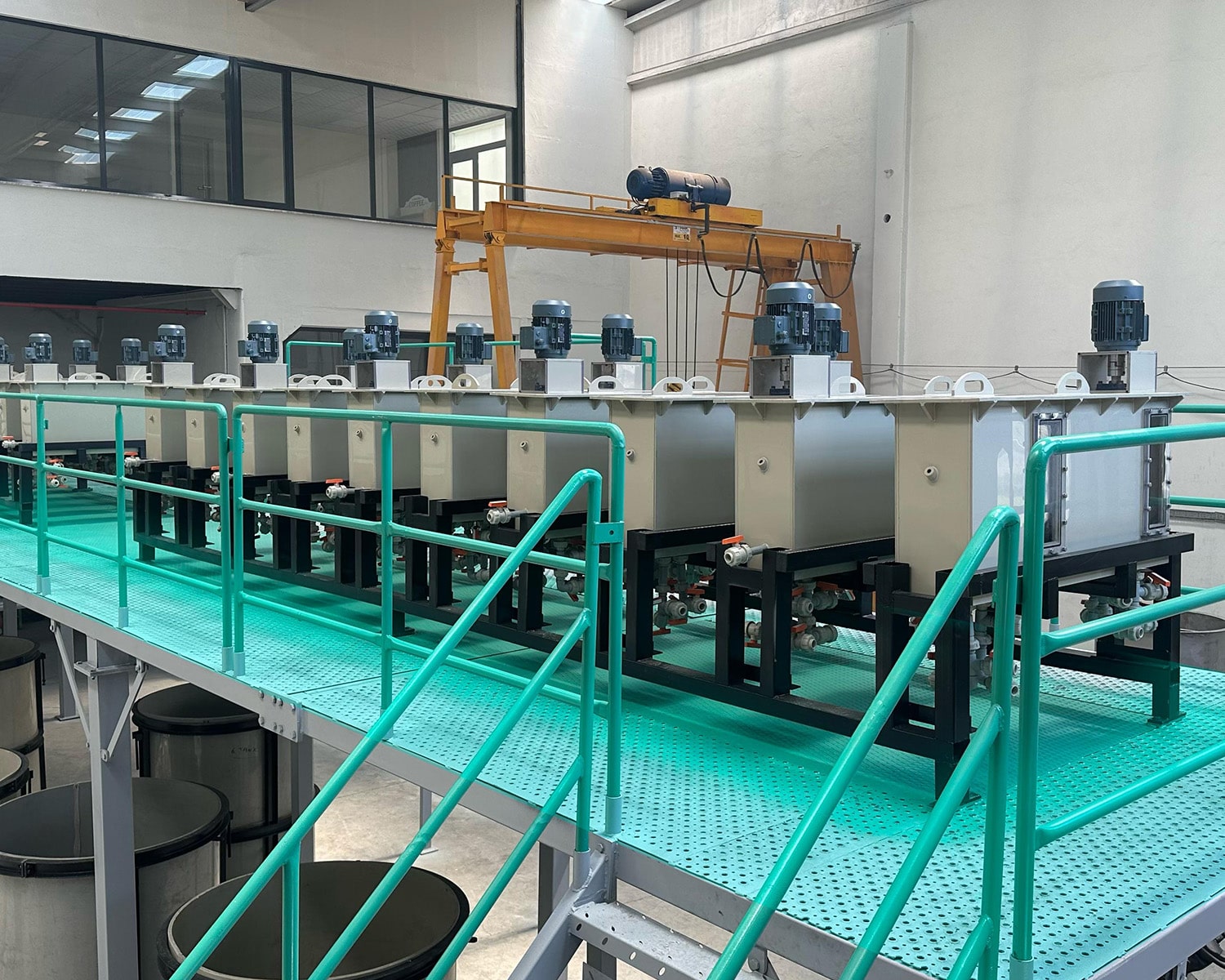
Solvent Extraction in Battery Recycling
Solvent extraction is an essential process in battery recycling that follows chemical leaching. After valuable metals are dissolved into a leaching solution, solvent extraction is used to selectively separate and concentrate these metals from the solution. This method is especially effective in recovering metals like cobalt, nickel, and lithium from battery materials. The system consists of mixer-settler units based on the principle of liquid-liquid extraction and is used in three main stages: extraction, scrubbing (washing), and stripping. Proses Makina offers a proprietary mixer-settler design that prioritizes maximum efficiency and ease of operation, ensuring superior performance across a wide range of applications.
Solvent Extraction Process
An organic solvent is selected based on its ability to selectively bind with the desired metals. The solvent forms a complex with the target metals while leaving impurities behind. The leachate and the solvent are mixed in an extraction unit. The solvent’s complexing agents selectively bind to the dissolved metals, forming metal-rich organic compounds. The mixture is then allowed to settle, facilitating phase separation. The organic phase, containing the metal-rich complexes, separates from the aqueous phase, which holds impurities and unreacted reagents. The metal-rich organic phase is transferred to a stripping unit, where the metals are selectively stripped from the solvent using a suitable solution. This solution usually has high acidity or another reagent that releases the metals from the complex.
The stripped solution, called the “loaded strip,” contains the concentrated metals and can be further processed for refining. The solvent used in the process can be regenerated for reuse in future extraction cycles. Solvent Extraction Systems typically use Mixer-Settlers for liquid-liquid extraction. These systems operate in continuous mode and are composed of two stages. The first stage involves mixing the two liquid phases to facilitate mass transfer, while the second stage utilizes gravity for natural separation and settling of the phases. Mixer-Settlers can be integral or separate and can operate either continuously or in batches.
A scrubbing step is performed to clean the leach solution from impurities, followed by the recovery of rare metals using appropriate organic solvents. Precipitation is then carried out, and the resulting solid is filtered to obtain the desired form of the recovered materials.
Mixer-Settler Technology
The specially engineered impeller design enables high loading efficiency of target metals into the solvent phase by ensuring effective integration of solution feeding and mixing. This optimized mixing performance enhances mass transfer between phases and maximizes metal recovery. The integrated solvent recovery unit maintains operational balance by stabilizing phase ratios and reducing solvent losses, contributing to resource sustainability and process cost-efficiency.
Precisely positioned pH and temperature sensors allow for real-time monitoring of critical process parameters, providing instant feedback to maintain process stability and efficiency. Given the sensitivity of solvent extraction processes, accurate and continuous analysis is essential. An automated control system ensures consistent and efficient operation of the entire process line.
The solvent extraction process yields concentrated metal solutions with exceptional purity, enabling seamless integration into downstream refining processes. By extracting valuable metals from battery components, Proses Makina contributes to sustainable practices and resource conservation, aligning with eco-friendly initiatives.
